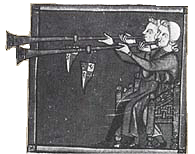Mensa Artists Owl Digital Art Graphic
When I create an art image, it is interesting
for me to analyze how it reveals my sub-conscious mind and soul, expressed in an
associative and conscious communicating way. I am finishing the Mensa Artists Owl art
image into an 18 x 24 inch print mounted on foam core board perhaps to be
professionally framed and presented to the Phoenix Artists Guild for
critiquing. Visit http://ymmartin.com/mensa_artists
A friend recently questioned why the figurine
doll was included in the graphic placed in front of the owl, and I replied: "It's a
jester entertainer, musician doll figurine, representing all performing arts
artists."
Also, my Mother’s name was ‘Doll’. The
instrument the medieval feminine doll is holding/playing is an ancient
historical trumpet, one of the oldest instruments in man’s history, and in Junior High, I studied and learned to play the trumpet (could already play the piano) prior
to playing the tenor saxophone in marching band, dance band, and state high
school musical contests. The small figurine doll (feminine) is included in the
art graphic memorializing my Mother who liked and collected curio figurines of
all sorts, the medieval music playing imp doll represents the eternal life
communicating spirit of my Mother expressed through her love of music and
dancing. The owl symbolizes my Father who taught me about owls and nature,
loved learning, revered knowledge, and was very intelligent and wise. The poem
on the graphic is titled “Not Lost In Time” and signifies the continuity of
artistic thought and achievement, timeless, being a unifying force in history
rather than being divisive. The last line of the poem says, “we’re not apart,
but whole.” conveying mother and child are never separated spiritually, more
conceptually, the artist and their art are never separated, hence the
intellectual property ownership copyright laws.




 Wind instruments: Brass
Wind instruments: Brass
The
trumpet was (and is still) a very loud instrument, which was
used for outdoor activities such as tournaments, fanfares, and in battle. Since
the technique of bending brass had not yet been applied to instruments, the
medieval trumpet was very long, sometimes even as much as six feet. The long
middle-register trumpet was known as the trompe or
buisine. The shorter, higher-pitched trumpets were called
trompettes.
No comments:
Post a Comment